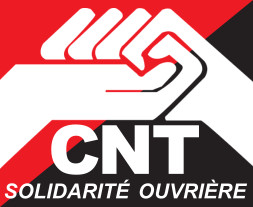Each summer, a health survey takes place between the 1st of June and the 15th of September to prevent the risks caused by high heat and heat waves. These climatic events are affecting our work conditions and can put us in danger. This article sums up the rules for the protection of the workers.
In case of problem, don’t hesitate to contact the union !

The French Labor Code (L. 4121-1 et suivants et articles R.4121-1) prescribe that the employers have the responsibility to prevent any danger to their workers. It applies to weather hazard.
It is mandatory for employers to take specific measures concerning heat wave, called “Plan Canicule” (Heatwave plan). It was written by ministers, during the heatwave of 2017, but it’s still valid today.
Legal definition of a heatwave: when the outside temperature is more than 19°C by night and 34°C by day, during 3 to 5 days (depending on the location).
The “Plan Canicule” have 4 levels:
“Level 1: the seasonal survey”: a vigilance map is activated every year, from the 1st of June to the 31th of August.
“Level 2: the heat warning”: The map become yellow. The ARS (Agences Régionales de Santé) takes progressive measures.
“Level 3: heatwave alert”: when a county is on orange vigilance on the map, the prefecture and the ARS decide to activate the measures of the “Plan de Gestion Canicule Départemental”.
“Level 4: maximal engagement”: when the vigilance map becomes red in case of massive heatwave in a large part of the territory. The First minister, after input from the minister of health and the minister of interior, takes State actions.
The vigilance map : https://vigilance.meteofrance.fr/fr
Duty of the employers:
To contain the risk of work accidents due to weather hazard, the employers have to apply the 19th of December 2008 decree about the protection of workers exposed to special weather conditions.
The employer has to:
- Write about risks due to weather in the “document unique” and take actions to prevent and assure the worker’s health and safety (Article R4121-1).
- For construction workers. The employer has to let them rest in a special places, adapt to climatic hazard, or adapt the construction site to let them rest with safety (Article R4534-142-1). The employer has to give each worker 3 liters of drinkable and cold water (Article R4534-143).
- All workers must have access to cold and drinkable water (Article R4225-2).
- The work place must be ventilated to avoid excess heat (Article R4222-1).
Careful : during the COVID-19 pandemic, the use of fans or AC fans is not recommended when people are working together -even when wearing masks- when the air is directed on people. - The employer has to provide safety gears comfortable for work in high heat.
- He has to organize work without exposing workers to high heat.
- He has to provide mechanical assistance for load handling.
- Ensure engine drivers are not exposed to high temperature rise.
- Underage workers cannot work during extreme temperatures (Article D4153-15).
Applicable measures when there is red vigilance alert on the map:
- The employer has to provide workers safety and re-evaluate the risks daily. He has to check:
- Temperature change.
- The type of work, in particular work outside, work in usual high heat conditions, or work with physical loads.
- The age and health of the workers.
- After the evaluation, the employer has to take actions:
- Adapt the burden of the work, schedules, and the planning.
- Allow more teleworking, in particular for pregnant women, disabled persons or persons with medical conditions.
- If the actions are insufficient to prevent health and safety risks, the employer has to stop the work.
- The confined places with AC fans has to be evacuated when the temperature rises over 34°C (recommandation CNAM R.226).
.
What the workers can do when their employer doesn’t respect these recommendations
If:
- No action has been taken
- The actions are insufficient in regard to the climatic conditions
- The employer refuses to adapt the workplace and/or didn’t give cold and drinkable water
The workers can seize the “inspection du travail” who can re-make the evaluation and choose to apply the article L.4131-1 of the Labor Code say that the worker can use his right to alert (droit d’alerte) or right to retreat (droit de retrait) when there is an actual danger for his/her life or health. He/she has to alert the employer about the situation of danger. The worker can retreat from work, with no loss of salary or possible penalty.
Indemnity/compensation for the loss of working hours during the heat wave, in case of orange or red vigilance.
Recovery of loss working hours:
There are rules which can be used to recover lost working hours due to climatic hazard. The recovery, without agreement, cannot be more than one hour per day or eight hours per week.
Partial activity/ partial unemployment (Activité partielle/chômage partiel)
The employer can ask the State a indemnity to compensate the loss of working hours

